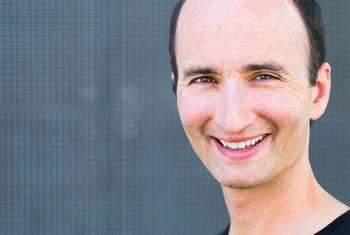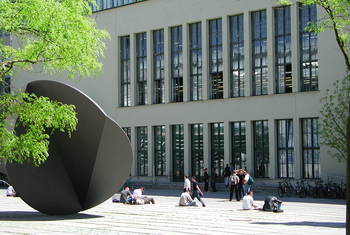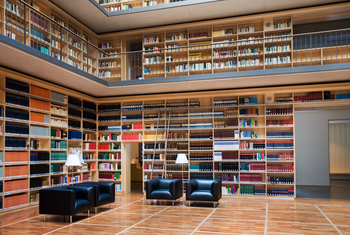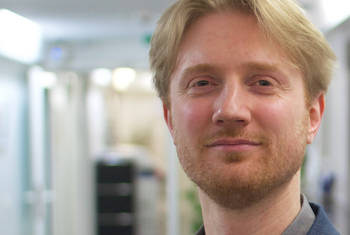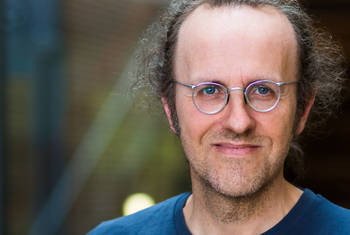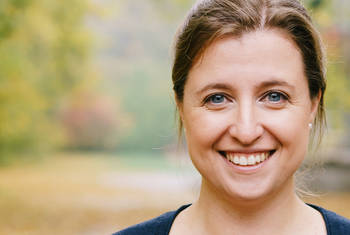Daniel Cremers How Can We Get 3D-Pictures of Moving Objects with Just One Camera?
Daniel Cremers is Professor for Computer Science and Mathematics at the Technical University Munich. As a postdoctoral researcher, Cremers spent two years at the University of California, Los Angeles and one year as a Siemens Corporate researcher at Princeton, New Jersey. For his research in the field of computer vision and mathematical image analysis, Cremers was awarded the esteemed Leibniz Award 2016. Cremers seeks to tackle the difficulty of representing a 3-dimensional world on camera.
Area of Research
Computer Vision, Optimization, Image Analysis
since 2009
Professor for Computer Science (since 2012 Dual Affiliation in Mathematics)
Technical University of Munich (Technische Universität München) (more details)
Department of Informatics
2007
Visiting Researcher (with Prof. A. Blake)
Microsoft Research, Cambridge, UK
2005-2009
Professor for Computer Science
University of Bonn (Rheinische Friedrich-Wilhelms-Universität Bonn)
Head of Computer Vision and Pattern Recognition Group
2004-2005
Research Scientist
Siemens Corporate Research, Princeton, NJ
2002-2004
Postdoctoral Researcher
University of California, Los Angeles
Department of Computer Science, with Prof. Stefano Soatto at the UCLA Vision Lab
1999-2002
Research Fellow
University of Mannheim (Universität Mannheim)
Department of Mathematics and Computer Science, with Prof. Christoph Schnörr in the Computer Vision Group
1998-1999
Research Fellow
Humboldt University of Berlin (Humboldt-Universität zu Berlin)
Department of Biology, with Prof. Andreas V. M. Herz at the Institute of Theoretical Biology
1996-1998
Teaching and Research Assistant
Heidelberg University (Ruprecht-Karls-Universität Heidelberg)
Department of Physics, with Prof. Andreas Mielke and Prof. Franz Wegner, Statistical Physics
2002
PhD in Computer Science
University of Mannheim (Universität Mannheim)
Thesis "Statistical Shape Knowledge in Variational Image Segmentation"
1997
Diploma in Theoretical Physics
Ruprecht-Karls-Universität Heidelberg
Prizes
- Google Faculty Research Award (2014)
- ISMAR Best Short Paper Award (2014)
- ICRA Best Vision Paper Nomination (2013)
- UAV-g Best Paper Award (2013)
- Listed among Germany's Top 40 Researchers below 40 (2010)
- ACCV Best Paper Honorable Mention (Töppe, Oswald, Rother and Cremers) (2010)
- GFFT Preis for PhD thesis of Andreas Wedel (2010)
- DAGM Main Conference Award (Goldlücke and Cremers) (2009)
- DAGM Paper Award (Oswald, Töppe, Kolev and Cremers) (2009)
- UCLA Chancellor's Award for Postdoctoral Research (2005)
- Olympus Award (2004)
- Best Paper of the Year 2003, Intl. Pattern Recognition Society (2004)
- Nomination for Best Thesis in Computer Science 2002 by the German Society of Computer Science (2003)
- DAGM Main Conference Award (2001)
Fellowships
- Cluster of Excellency Hausdorff Center for Mathematics (2007)
- Emmy Noether Scholarship, DFG (2005)
- Fulbright Scholar in Indiana (Indiana State Univ.) and New York (SUNY at Stony Brooks) (1994-1995) )
- Member of Studienstiftung des deutschen Volkes (1993-1998)
- ERC Starting Grant (2009)
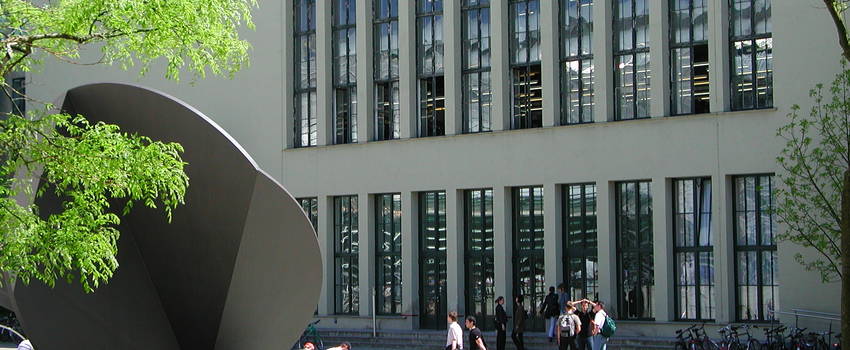 © TUM Fotostelle
© TUM Fotostelle

Technical University of Munich (Technische Universität München)
München, Germany"Technische Universität München (TUM) is one of Europe’s top universities. It is committed to excellence in research and teaching, interdisciplinaryeducation and the active promotion of promising young scientists. The university also forges strong links with companies and scientific institutionsacross the world. TUM was one of the first universities in Germany to be named a University of Excellence. Moreover, TUM regularly ranks among the best European universities in international rankings." (Source)
Map
The recovering of our 3D-world with only one camera is a challenge in many fields ranging from self-driving cars to plastic surgery. In this video DANIEL CREMERS presents innovations from computer vision to tackle that challenge. Modelling the movement of a camera in addition to the geometry of the depicted world and using new algorithms allow the recovery of more pictures in real-time. The algorithms compute the highest possible consistency between consecutive images and make it possible to recover even moving objects with the limited computational space of a laptop.
LT Video Publication DOI: https://doi.org/10.21036/LTPUB10144
LSD-SLAM: Large-Scale Direct Monocular SLAM
- Jakob Engel, Thomas Schöps and Daniel Cremers
- Computer Vision–ECCV 2014
- Published in 2014
LSD-SLAM: Large-Scale Direct Monocular SLAM
- Jakob Engel; Thomas Schöps; Daniel Cremers
- European Conference on Computer Vision (Working Paper)
- Published in 2014
Chicago


